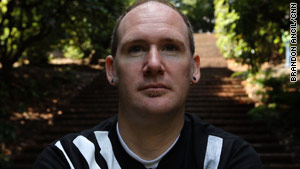It has been touted as a natural way to improve your heath and cleanse the soul. But doctors are now finding the procedure known as colon cleansing can cause dangerous side effects.
Colon cleansing, technically known as colonic hydrotherapy or colonic irrigation, is a popular treatment, usually performed at spas. It often involves the use of chemicals in the body and in hydrotherapy, the colon is flushed with water through a tube inserted in the rectum.
But oral home remedies are also available and have become popular, especially over the Internet. Now researchers from Georgetown University in Washington, D.C. say there's no evidence any of these colon cleansing treatments work and, in fact, when used improperly can cause cramping, kidney failure and in some extreme cases, death.
"There can be serious consequences for those who engage in colon cleansing whether they have the procedure done at a spa or perform it at home," says the lead author, Dr. Ranit Mishori, a family medicine physician at Georgetown University School of Medicine. "Colon cleansing products in the form of laxatives, teas, powders and capsules... tout benefits that don't exist."
Mayo doctor is no fan of cleanses
Although colon cleansing has been around for centuries as a way to rid the body of unwanted toxins, the American Medical Association determined in the early 1900s that the procedure was invalid; there was no evidence to show the methods worked. And even though there still remains no solid evidence these products do what they claim, colon cleansing has been making a comeback, mainly because manufacturers claim it also helps people lose weight.
"If this method were the key to weight loss, it would be amazing. But there is no evidence that this helps people lose weight,” says Mishori. "Manufacturers don't describe how it works. The statements are a little empty. They say it will enhance your immune system, up your metabolism, give you energy. It’s all pretty vague. Some people swear by it, but it could be a placebo effect. And companies can make these claims, because the federal government doesn't regulate their products."
Not expecting miracles, but I love my cleanses
According to the report released this week in the Journal of Family Practice, Mishori and her colleagues examined 20 studies published in medical literature over the last 10 years.
Investigators noted while these reports showed little evidence of colon cleansing benefits, there were a number of side effects reported following the use of these cleansing methods. Those effects included cramping, bloating, nausea, vomiting, electrolyte imbalance and renal failure. And in some cases, ingredients in these remedies were toxic.
"Some herbal preparations have also been associated with aplastic anemia and liver toxicity," Mishori said.
Researchers also noted that many of the "spas" that offer colon cleansing have no trained clinicians and even organizations such as the National Board for Colon Hydrotherapy and others who promote colon cleansing require technicians who perform professional colon cleansing to have little more than a high school diploma.
"When you flush your colon out with a hose, it's like giving yourself an enema on steroids. You shouldn't put things up there that really don't belong there," stressed Mishori. "Imagine 60 liters of water going through your colon. The stress it puts on the system, and the hose, if not used correctly, could puncture the organ."
As for the home remedies, Mishori says there's no need for them. "We poop and pee for a reason. If you are a healthy person, the body does it for you."
When asked what was the best way to cleanse the body, Mishori was quick to respond.
"Eat a balanced diet, exercise regularly," she stressed, "Get six to eight hours of sleep and see a doctor regularly. But no one wants to do that," she said with exasperation. "But they'll use a hose to flush themselves out! The use of these methods are unhealthy. And what's scary is we only examined the cases that were reported to hospitals and doctors. Imagine all the people who are using these products and methods and have side effects and never go to the hospital. We don't know about them. The numbers could be staggering."























